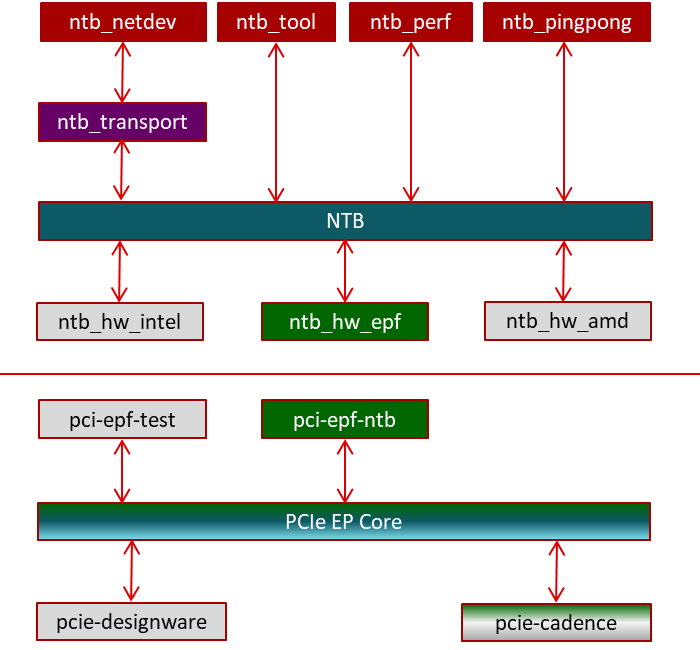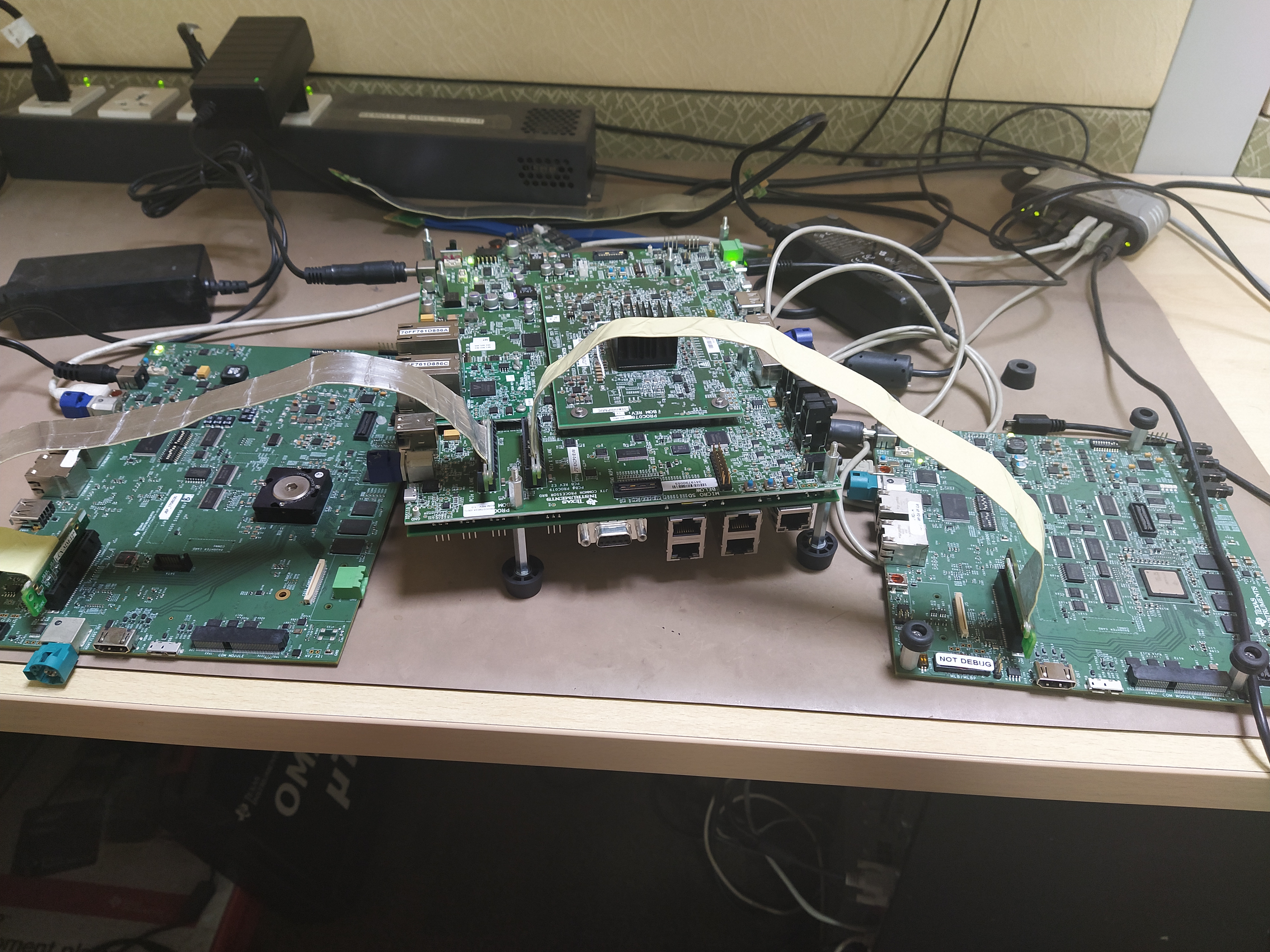3.2.2.11. PCIe Backplane¶
Introduction
PCIe backplane allows multiple hosts with RC ports to communicate and share data with each other.

PCIe backplane is implemented using multiple instances of multi-function endpoint controller. Each host should be connected to a separate endpoint controller instance and each host will enumerate the other host as an independent function.
PCIe uses NTB (non transparent bridge) for two hosts to communicate with each other. Though J721E doesn’t have an explicit NTB controller, NTB functionality can be achieved using multiple endpoint controller instances. And for PCIe backplane (to connect more than 2 hosts), aggregation of NTB controllers can be modeled using multiple instances of multi-function endpoint controller.
In the below diagram, PCI NTB function configures the SoC with multiple PCIe Endpoint (EP) instances in such a way that transaction from one EP controller is routed to the other EP controller. Once PCI NTB function configures the SoC with multiple EP instances, HOST1 and HOST2 can communicate with each other using SoC as a bridge.
+-------------+ +-------------+
| | | |
| HOST1 | | HOST2 |
| | | |
+------^------+ +------^------+
| |
| |
+---------|-------------------------------------------------|---------+
| +------v------+ +------v------+ |
| | | | | |
| | EP | | EP | |
| | CONTROLLER1 | | CONTROLLER2 | |
| | <-----------------------------------> | |
| | | | | |
| | | | | |
| | | SoC With Multiple EP Instances | | |
| | | (Configured using NTB Function) | | |
| +-------------+ +-------------+ |
+---------------------------------------------------------------------+
NTB SW Architecture
The SW architecture for NTB both on the host side and EP side is given below. The top half is the host side NTB architecture, and the bottom half is the endpoint side NTB architecture.

Backplane Setup
The following picture shows J721E EVM connected to two DRA7 EVMs. Here the two DRA7x boards communicate with each other using J721E as backplane.

Backplane Configuration
Backplane DTS Overlay File
The following DTS overlay file configures the PCIe controller in EP mode and also contains a device tree node to create a NTB function device:
arch/arm64/boot/dts/ti/k3-j721e-pcie-backplane.dtso
In order to apply the dts overlay file, the following command should be given in u-boot prompt:
#setenv name_overlays k3-j721e-pcie-backplane.dtbo
EP Side Configuration (J721E Backplane)
J721E backplane should be booted before any of the hosts are booted-up. Once the kernel comes to prompt, the following commands should be given to start LTSSM of PCIe0 and PCIe1:
cd /sys/kernel/config/pci_ep/
echo 1 > controllers/d800000.pcie-ep/start
echo 1 > controllers/d000000.pcie-ep/start
(PCIe2 can also be configured for NTB, but that is not tested yet).
RC Side Configuration
The hosts that have to communicate with each other can be bought up in any order after EP has been brought up. Once the host boots up, the below steps have to be done in each of the hosts.
Since the same vendor ID and device ID are used for multiple function drivers (pci-endpoint-test and ntb_hw_epf), the device should be first ubound from existing driver.
echo 0000:01:00.0 > /sys/bus/pci/devices/0000\:01\:00.0/driver/unbind
After unbinding from existing driver, it should be bound to ntb_hw_epf driver.
echo 0000:01:00.0 > /sys/bus/pci/drivers/ntb_hw_epf/bind
Then bind one of the NTB application driver. Here ntb_netdev is bound to emulate ethernet over PCIe. This will create a new ethernet interface for each of the hosts.
modprobe ntb_transport
modprobe ntb_netdev
Kernel Configs
EP Side (J721E Backplane)
CONFIG_PCI_ENDPOINT=y
CONFIG_PCI_ENDPOINT_CONFIGFS=y
CONFIG_PCI_EPF_NTB=y
CONFIG_PCI_J721E=y
CONFIG_PCIE_CADENCE=y
CONFIG_PCIE_CADENCE_EP=y
Host Side
CONFIG_PCI=y
CONFIG_PCI_MSI=y
CONFIG_NTB=m
CONFIG_NTB_EPF=m
CONFIG_NTB_TRANSPORT=m
CONFIG_NTB_NETDEV=m
RC controller configs
Additional Information
For additional information, please refer to:
<Processor_SDK_install_dir>/board-support/linux-[ver]/Documentation/PCI/endpoint/pci-test-ntb.txt
